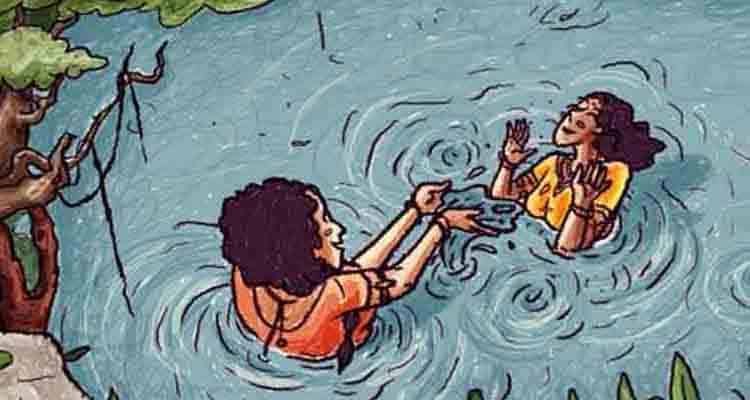The Saraswati River is one of the most important and sacred features in Indian mythology, history, and culture. It has always been written as a mighty river of the Vedic period. Though it’s no longer there in its physical form, ancient scriptures talk of it as a vital channel that flowed between civilizations. Saraswati has […]Read More
Tags : indian mythology
Discover the Ancient Wisdom: Explore the Timeless Teachings of the
The Sanat-Kumara Purāṇa is an ancient Hindu text radiant with spiritual wisdom, cultural richness, and the depth of Indian mythology and philosophy. This Purāṇa is one of the eighteen Mahāpurāṇas attributed to Sanat-Kumara, one of the four Kumaras who are considered eternal youth and seers in Indian tradition. In this blog, various features of Sanat-Kumara […]Read More
Bhagiratha the king who brought Ganga from heaven to earth was born out of two mothers. The story is unique just like Bhagiratha and his works. Even in today’s environment, queer romance struggles to be recognized, let alone celebrated. Pride parades intended to familiarise, bold films intended to educate, and artwork intended to normalize this […]Read More
Shiva is commonly described as the ultimate man because he represents ultimate masculinity, yet in the Ardhanarishvara form of Shiva, one-half of him is a fully formed woman. Shiva was in a blissful state, and Parvati was drawn to him as a result.Read More
Aravan was the son of Arjuna and the Naga princess Ulupi. He was killed by the Kauravas in the Kurukshetra conflict, but according to legend, he dedicated his life to the Goddess Kali to secure the Pandavas' triumph in the war. In India, he is also known as the god of the transgender population. Aravan references can also be found in the Vishnu Purana and the Bhagavata Purana, in addition to the Mahabharata. Read More
Shikhandi is born a male but becomes transgender as a result of Shiva bestowing the capacity to remember her former lives on her. In any case, Shikhandi gets his chance to be the cause of Bhishma's death near the end of the Mahabharata during the Kurukshetra war, as Shiva prophesied, and the question of his gender plays a key role. Read More
Maa Kaalratri is the most fierce form of Maa Durga. She is worshipped on the seventh day of Navratri. 'Kaal' denotes the word darkness or death and 'Ratri' means night. She is also known as Shubankari which in Sanskrit means auspicious. She is the Goddess who brought an end to darkness. Read More
Skandmata rides on a lion have four arms, holds the lotus in two hands, lugs Kartikeya with the third hand, and the fourth hand is in the blessing position. She symbolizes motherhood and love. Her complexion is calm and serene. Read More
Maa Parvati got the name Brahmacharini due to her immense sacrifice, solitude, and purtiy she carries. Brahmacharini is remarkably radiant and portrayed as wearing a white saree, holding a rosary in one hand and kamandal in another.Read More








